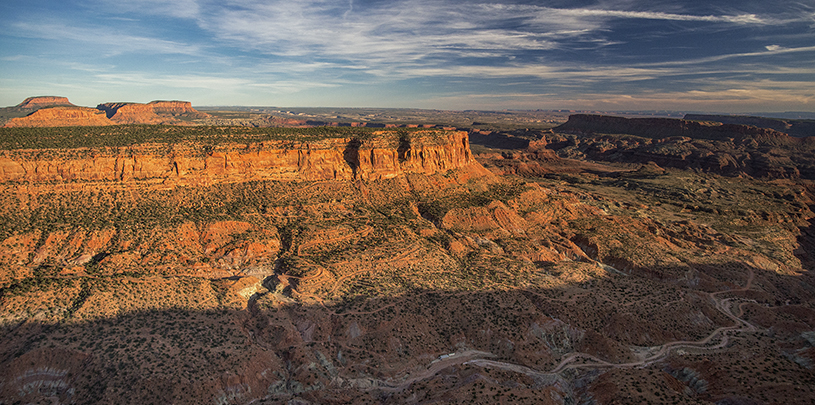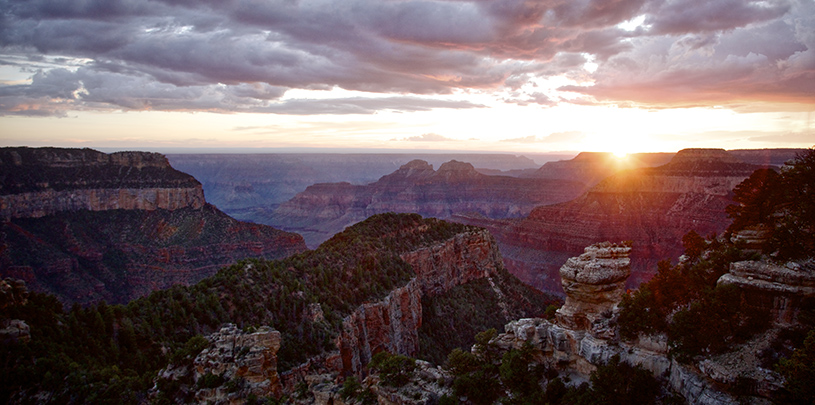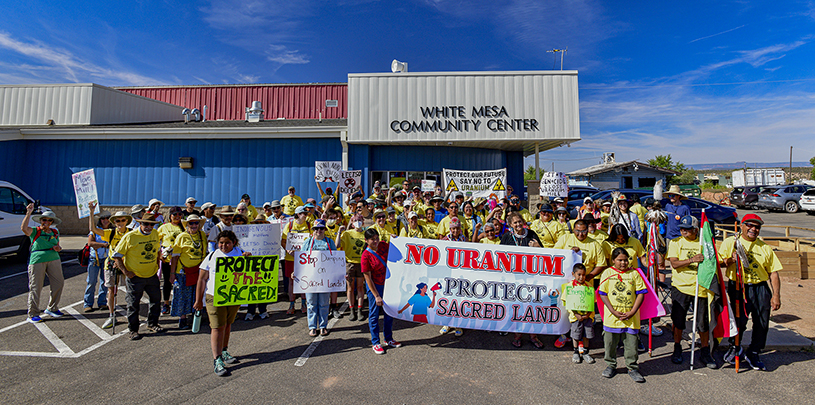
More than a year after uranium miners asked the federal government to artificially boost uranium prices using trade measures, a working group stemming from that process and tasked by President Trump with finding other ways to overcome “challenges in producing uranium domestically” is expected to announce recommendations to that end in the next two weeks. The working group’s recommendations are likely to have implications for the Grand Canyon mining ban and the Canyon uranium mine near the Grand Canyon’s south rim.
These recommendations, due October 10, 2019, will follow shortly on the heels of a request that the Grand Canyon Trust and others recently made to the Arizona Department of Environmental Quality (ADEQ). We asked ADEQ to close Canyon Mine and issue a different type of groundwater permit for the cleanup process than the more lenient one the mine currently has.
Stricter groundwater permit needed at Canyon Mine
As groundwater continues to inundate the mine shaft, there’s no denying that Canyon Mine poses more severe risks to groundwater than what ADEQ and the mine owner prepared for back in the 1980s when the mine was first permitted. For the past three decades, the state of Arizona has issued the mine’s operator a “general” permit on the assumption that little or no groundwater would flow into the mine each year and therefore “pose little environmental risk.”
According to ADEQ’s own regulations, facilities that “could have a significant environmental impact are not eligible to operate under a general permit.” Yet despite the mine operator’s early claims, recent records requests have turned up the full picture of water flooding into Canyon Mine.
Serious water problems at Canyon Mine
In the past six years, over 20 million gallons of groundwater have flowed into the mine shaft. Limited groundwater monitoring by the U.S. Geological Survey shows cleaner water from the same aquifer nearby, so it’s likely that elevated levels of uranium and arsenic found in the mine shaft water have come from the mine shaft itself and the newly exposed rock within it. If that water, today or a hundred years from now, finds its way beyond the mine shaft, we have a vehicle for contamination to spread, a risk that only worsens once mining begins and ore is exposed to oxygen and transported up the mine shaft.
Here’s a brief breakdown of the mine shaft’s construction and flooding:
1986 – Canyon Mine environmental review completed, approved to move ahead by the state of Arizona and the U.S. Forest Service. Both regulators are told by the mine operator that the mine will not intersect groundwater. Approvals are given with that foundational assumption in mind.
1990 – Canyon Mine goes on standby with an unfinished mine shaft dug 50 feet deep.
2013 – 671,394 gallons of water pumped out of the mine shaft. Mineshaft advanced from 50 feet to 300 feet deep.
2014 – Mine on standby. The company reports to ADEQ that it removed no water and advanced the shaft 0 feet.
2015 – 151,403 gallons of water pumped out of the mine shaft. Mine removed from standby status in October. Water pumping occurred in October, November, and December. Mine shaft advanced from 300 feet to 450 feet.
2016 – 1,422,066 gallons of water pumped out of the mine shaft. Mine shaft advanced from 450 feet to 1,400 feet. Samples of water removed from the mine shaft begin showing elevated levels of dissolved uranium and arsenic. This is also the year that the mine shaft reaches the level of the ore body (900-1,400 feet below the surface).
2017 – 8,788,595 gallons of water pumped out of the mine shaft. Mine shaft advanced from 1,400 feet to 1,450 feet.
2018 – 9,682,888 gallons of water pumped out of the mine shaft. Mine shaft advanced from 1,450 feet to 1,470 feet, the depth the mine operator says mining operations will commence. The operator then suspends operations.
2019 – We won’t know how many gallons of water have been pumped out of the mine until early 2020, but we do know that mine operations are still suspended. The mine owner has two employees on site to remove water from the mine shaft, control dust, and perform other maintenance activities. The mine still lacks ventilation systems required to begin operations.
What will the working group recommend?
As the threat posed by Canyon Mine grows, the president’s working group seems poised to make matters worse for the Grand Canyon region. In a mid-August letter, the Nuclear Energy Institute (NEI) — a nuclear industry trade association — asked the working group to consider several measures that could impact the Grand Canyon region. Among the requests are lifting “current federal land withdrawal restrictions prohibiting access to high grade domestic uranium deposits pursuant to the Administration’s Federal Strategy to Ensure a Reliable Supply of Critical Minerals,” and a call for uranium subsidies in the form of direct payments to U.S. utilities or domestic uranium producers. In other words, the NEI has asked not just for the Grand Canyon region to be reopened to new mining claims and mines, but for taxpayers to give uranium-mining companies money as a way to defray losses from their unprofitable operations.
The Trust and our partners stand ready to defend the Grand Canyon mining ban and to hold mining companies accountable for the threats they pose to the region today and for generations to come. The Colorado Plateau has seen enough of uranium’s toxic legacy and we won’t be silent and allow that legacy to grow.
Stay tuned as both the decision from ADEQ and the recommendations from the working group.




